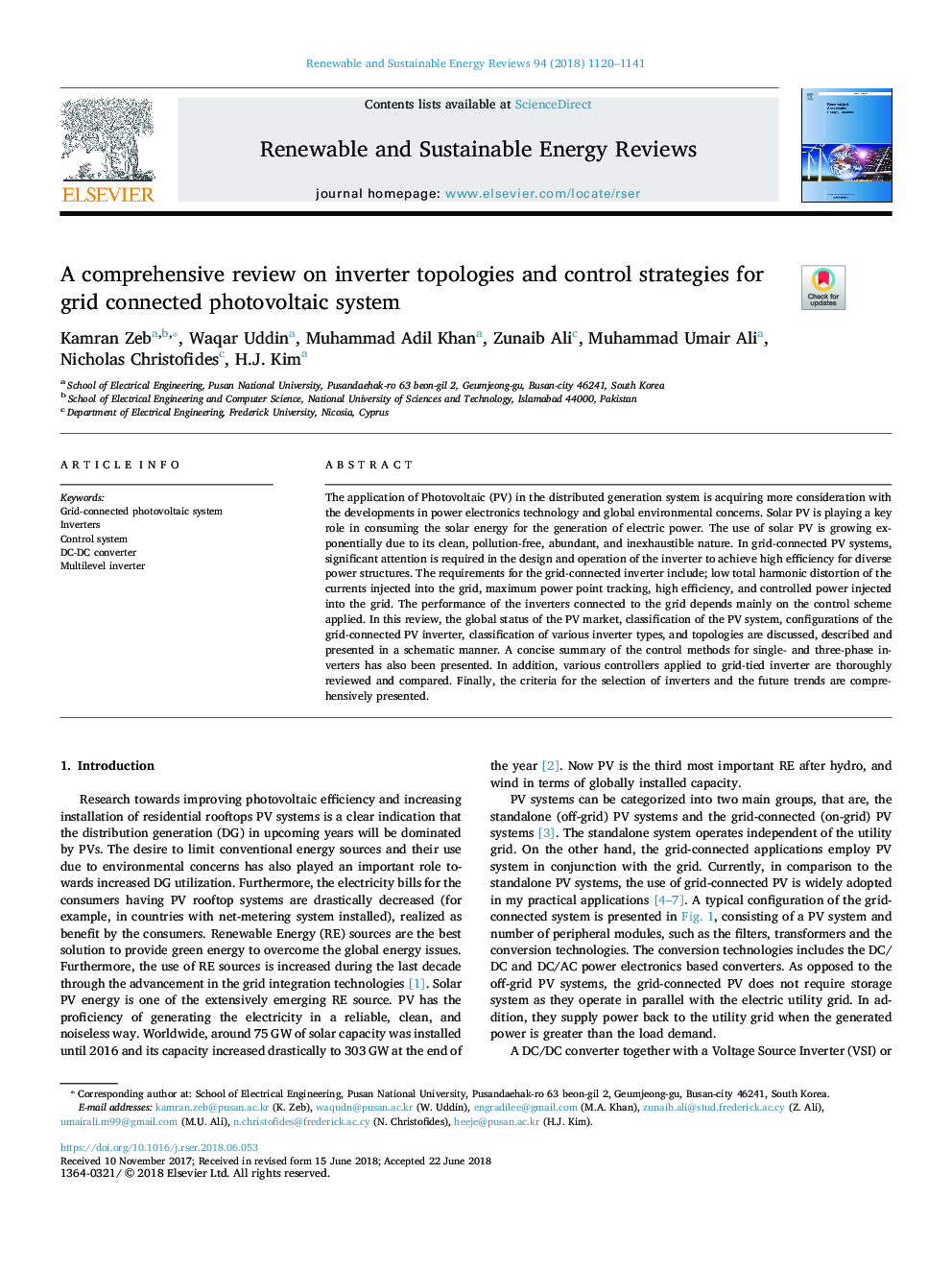| Article ID | Journal | Published Year | Pages | File Type |
|---|---|---|---|---|
| 8110619 | Renewable and Sustainable Energy Reviews | 2018 | 22 Pages |
Abstract
The application of Photovoltaic (PV) in the distributed generation system is acquiring more consideration with the developments in power electronics technology and global environmental concerns. Solar PV is playing a key role in consuming the solar energy for the generation of electric power. The use of solar PV is growing exponentially due to its clean, pollution-free, abundant, and inexhaustible nature. In grid-connected PV systems, significant attention is required in the design and operation of the inverter to achieve high efficiency for diverse power structures. The requirements for the grid-connected inverter include; low total harmonic distortion of the currents injected into the grid, maximum power point tracking, high efficiency, and controlled power injected into the grid. The performance of the inverters connected to the grid depends mainly on the control scheme applied. In this review, the global status of the PV market, classification of the PV system, configurations of the grid-connected PV inverter, classification of various inverter types, and topologies are discussed, described and presented in a schematic manner. A concise summary of the control methods for single- and three-phase inverters has also been presented. In addition, various controllers applied to grid-tied inverter are thoroughly reviewed and compared. Finally, the criteria for the selection of inverters and the future trends are comprehensively presented.
Keywords
Related Topics
Physical Sciences and Engineering
Energy
Renewable Energy, Sustainability and the Environment
Authors
Kamran Zeb, Waqar Uddin, Muhammad Adil Khan, Zunaib Ali, Muhammad Umair Ali, Nicholas Christofides, H.J. Kim,
